
Human-Wildlife Interactions
Scope & Guideline
Championing Innovative Strategies for Wildlife Management.
Introduction
Aims and Scopes
- Human-Wildlife Conflict Management:
Research addressing the various forms of conflict arising from human-wildlife interactions, including strategies for mitigation, management practices, and community engagement. - Conservation Success Stories:
Highlighting successful wildlife conservation efforts, particularly in urban environments, to demonstrate the potential for coexistence and the positive impacts of conservation initiatives. - Impact of Human Activities on Wildlife:
Investigating how human activities, such as urban development, agriculture, and tourism, affect wildlife behavior, habitat use, and population dynamics. - Policy and Stakeholder Engagement:
Examining the roles of policies, regulations, and stakeholder perceptions in wildlife management and conservation strategies. - Innovative Research Methods:
Utilizing advanced methodologies such as drone technology, machine learning, and ecological modeling to study wildlife interactions and inform management practices.
Trending and Emerging
- Urban Wildlife Conservation:
An increasing emphasis on the role of urban areas in wildlife conservation, reflecting the need to address how urbanization impacts wildlife and how conservation efforts can be integrated into urban planning. - Community Involvement and Education:
A rising trend in involving local communities in wildlife management and conservation efforts, emphasizing the importance of education and stakeholder engagement in achieving sustainable outcomes. - Human Health and Safety Concerns:
Research focusing on the implications of wildlife interactions for human health and safety, particularly in relation to wildlife attacks and zoonotic diseases, is gaining traction. - Ecological Impacts of Technology:
Exploration of how modern technology, including drones and machine learning, is being utilized to study wildlife interactions and improve management practices. - Climate Change Effects on Wildlife Behavior:
An emerging focus on how climate change is altering wildlife behavior and habitat use, and the implications for human-wildlife interactions and conservation strategies.
Declining or Waning
- Traditional Wildlife Management Practices:
Research focusing solely on conventional management techniques, such as culling or trapping, seems to be decreasing, as there is a growing preference for more humane and sustainable solutions. - Invasive Species Control:
There is a noticeable decline in the number of papers specifically addressing invasive species management, possibly due to a broader focus on coexistence and holistic ecosystem approaches. - Generalized Human-Wildlife Interaction Studies:
Studies that broadly cover human-wildlife interactions without specific context or focus are becoming less frequent, indicating a shift towards more targeted and context-specific research.
Similar Journals
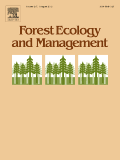
FOREST ECOLOGY AND MANAGEMENT
Fostering Sustainable Solutions for Global ForestsFOREST ECOLOGY AND MANAGEMENT is a premier peer-reviewed journal dedicated to the integral study of forest ecosystems and their management, published by Elsevier in the Netherlands. With an impactful presence in the field, this journal boasts a prestigious Q1 ranking in multiple categories, including Forestry, Management, Monitoring, Policy and Law, and Nature and Landscape Conservation as of 2023. It addresses key issues relevant to sustainable forest practices, conservation strategies, and environmental monitoring, making it a vital resource for researchers, practitioners, and policymakers alike. The journal is indexed with an impressive Scopus rank, placing it among the top tier of titles in Agricultural and Biological Sciences and Environmental Science. While it does not offer Open Access options, its rigorous review process and high visibility make it essential for those seeking to stay abreast of the latest findings and trends in forest ecology and management. Published continuously since 1976, FOREST ECOLOGY AND MANAGEMENT aims to foster interdisciplinary collaboration and advance knowledge critical to the stewardship of forest resources in an ever-changing global landscape.

Journal of Fish and Wildlife Management
Uncovering sustainable practices for ecological health.The Journal of Fish and Wildlife Management, published by the U.S. Fish & Wildlife Service, serves as a vital resource for scholars, researchers, and professionals in the fields of Animal Science, Ecology, and Conservation Biology. With its ISSN 1944-687X, this esteemed journal has been disseminating critical research findings since 2010, contributing significantly to the understanding of fish and wildlife conservation practices and their ecological impacts. Despite its Q3 category rankings in various disciplines as of 2023, it provides a platform for innovative research that influences policy and management strategies for biodiversity conservation. The journal, although not open access, remains committed to advancing the scientific discourse surrounding wildlife management with articles that emphasize practical conservation efforts and ecological sustainability. Readers can expect a diverse range of articles that promote best practices in the management and conservation of fish and wildlife resources, furthering our collective mission of preserving ecological health and biodiversity for future generations.
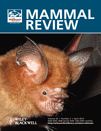
MAMMAL REVIEW
Pioneering Research in Ecology and Mammalian BehaviorMammal Review is a distinguished scholarly journal published by Wiley, focusing on the interdisciplinary study of mammals within the realms of Agricultural and Biological Sciences, Animal Science and Zoology, and Ecology, Evolution, Behavior and Systematics. With an impressive impact factor and consistently ranking in the top quartile (Q1) across several categories, this journal serves as a pivotal platform for researchers seeking to explore innovative findings and theoretical advancements in mammalian science. Since its inception in 1970, Mammal Review has evolved to include a diverse array of articles including synthesis reviews, empirical research, and theoretical pieces, ensuring that it remains at the forefront of mammalian studies. Researchers and professionals alike value this journal for its commitment to enhancing our understanding of mammal biology, conservation, and ecology, making it an essential resource for anyone involved in the study of wildlife and ecosystems. The journal, based in the United Kingdom, adheres to stringent peer-review standards, ensuring the publication of high-quality research that resonates with its global audience.

Frontiers in Conservation Science
Fostering Collaboration for a Greener TomorrowFrontiers in Conservation Science, published by Frontiers Media SA in Switzerland, is an esteemed open-access journal dedicated to advancing research in the field of conservation science. With an E-ISSN of 2673-611X, this journal aims to facilitate the exchange of knowledge among researchers, professionals, and students by publishing high-quality, peer-reviewed articles that explore innovative solutions to contemporary conservation challenges. Since its establishment in 2020, the journal has rapidly ascended to a Q2 ranking in the Nature and Landscape Conservation category, reflecting its commitment to impactful scholarship, as evidenced by its Scopus rank of #93 out of 211 in Environmental Science and a 56th percentile ranking. By promoting open access, Frontiers in Conservation Science ensures that vital research is widely disseminated, fostering collaboration and informed decision-making in the conservation community. This journal is a crucial platform for those dedicated to understanding and preserving our planet's biodiversity and landscapes.

CALIFORNIA FISH AND GAME
Fostering Knowledge for a Sustainable FutureCalifornia Fish and Game is a prominent journal dedicated to the fields of Animal Science and Aquatic Science, published by the California Fish and Game Editor. With its roots extending back to 1979, the journal has served as a vital platform for disseminating research focused on the wildlife and aquatic ecosystems of California and beyond. Recognized within the Q4 quartile for both Animal Science and Zoology and Aquatic Science, it provides critical insights and scholarly contributions, despite its comparative rankings within the respective categories. The journal, with an ISSN of 0008-1078 and an E-ISSN of 2331-0405, offers an invaluable resource for researchers, professionals, and students alike, looking to deepen their understanding of California's rich biodiversity and ecological challenges. For those interested in open access options, further details can be reviewed through the journal's platform. By fostering a community of inquiry, California Fish and Game plays an essential role in advancing knowledge and conservation efforts in the fields of interest.
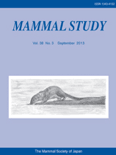
MAMMAL STUDY
Connecting researchers to promote mammalian science and ecology.Mammal Study, published by the Mammalogical Society of Japan, is a leading academic journal dedicated to the field of mammalogy and related biological sciences. Since its inception, it has provided a critical platform for researchers, professionals, and students to share their findings and insights into the diverse facets of mammalian biology, ecology, and conservation. The journal, with ISSN 1343-4152 and E-ISSN 1348-6160, is recognized for its rigorous peer-review process and has attained a commendable Q3 ranking in the 2023 category of Animal Science and Zoology. With an impact factor reflecting its growing influence—ranking 283 out of 490 in Scopus—we welcome contributions that advance the understanding of mammalian species and their habitats. While access to published articles is through traditional channels, the journal aims to reach an even wider audience by fostering greater awareness and appreciation for mammalian research and conservation efforts. The Mammal Study has converged years of insightful publications from 2008 to 2024, solidifying its position as a vital resource in the biological sciences.
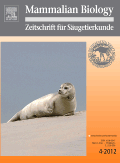
MAMMALIAN BIOLOGY
Pioneering Research in Mammalian Ecology and SystematicsMammalian Biology is a premier peer-reviewed journal published by Springer Heidelberg, dedicated to the field of mammalogy and related disciplines. With an impressive impact factor and categorized within the top quartiles (Q1 and Q2) of Animal Science, Zoology, as well as Ecology, Evolution, Behavior, and Systematics, this journal serves as a vital platform for researchers and scholars to disseminate high-quality research findings. The journal’s open access options enhance visibility and accessibility, vital in today's collaborative research environment. Since its inception in 2001, Mammalian Biology has fostered a comprehensive understanding of mammal ecology, behavior, and conservation strategies, ensuring its significant contribution to the field. With a broad scope that encompasses evolutionary studies to ecological assessments, it promises to be an essential resource for professionals and students alike who aim to keep abreast of the latest advancements in mammalian studies. Located in Germany, the journal continues to thrive, adapting to emerging scientific inquiries and supporting the ongoing dialogue in mammalogy until at least 2024.

Conservation Letters
Transforming Insights into Action for Nature's FutureConservation Letters, published by Wiley, is a premier peer-reviewed journal dedicated to advancing the field of conservation science. As an Open Access journal since 2015, it provides researchers, practitioners, and policymakers with immediate access to cutting-edge research and insights that shape effective conservation strategies globally. With an impressive impact factor and a distinguished standing in the academic community—ranking in the Q1 category in disciplines such as Ecology, Evolution, and Nature Conservation—the journal plays a vital role in disseminating high-quality research that informs environmental practices. Based in the United States, it encompasses a broad scope of topics aimed at bridging scientific findings with real-world applications, effectively contributing to the understanding and preservation of biodiversity. Researchers looking to publish innovative work in an influential platform will find Conservation Letters an essential venue for ensuring their research reaches an engaged international audience.
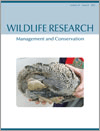
WILDLIFE RESEARCH
Shaping the Future of Wildlife Ecology and PolicyWILDLIFE RESEARCH is a leading journal dedicated to the rigorous study of wildlife ecology and management, published by CSIRO PUBLISHING in Australia. With a notable ISSN of 1035-3712 and an E-ISSN of 1448-5494, this prestigious journal has been at the forefront of advancing knowledge in the fields of ecology, evolution, behavior, and systems since its inception in 1974. Spanning over four decades, WILDLIFE RESEARCH has established itself as a Q1 journal in Ecology, Evolution, Behavior and Systematics and Q2 in Management, Monitoring, Policy and Law as of 2023, indicating its substantial impact and relevance in these critical areas. It ranks impressively in Scopus, with scores in the 72nd and 58th percentiles respectively for its categories, reflecting its commitment to high-quality research. The journal does not offer open access options, but it provides valuable insights for researchers, professionals, and students aiming to contribute to wildlife conservation and management practices. As it approaches its 50th year, WILDLIFE RESEARCH continues to play an essential role in shaping the discourse around environmental science, policy, and biodiversity conservation in the global landscape.
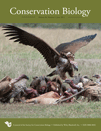
CONSERVATION BIOLOGY
Bridging research and action for biodiversity protection.CONSERVATION BIOLOGY, published by Wiley, is a leading journal in the field of ecology and conservation, with a focus on disseminating high-quality research that addresses pressing environmental challenges. With a strong impact factor and categorized in the top quartile (Q1) across various relevant fields including Ecology, Evolution, Behavior and Systematics, and Nature and Landscape Conservation, the journal plays a pivotal role in advancing the scientific understanding of biodiversity and conservation practices. Since its establishment in 1987, CONSERVATION BIOLOGY has provided a vital platform for researchers, professionals, and students to share innovative findings and facilitate discussions surrounding ecological sustainability and conservation strategies. Although it is not an open-access publication, it ensures that a wide range of significant research is accessible to the global scientific community. The journal’s rigorous peer-review process and reputation for excellence make it an essential resource for anyone involved in the study of ecology and conservation.